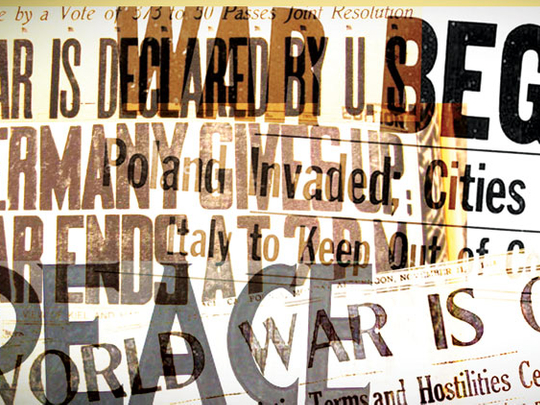
July 2014 marks the centenary of the start of the First World War. It was this month that Austria-Hungary delivered an ultimatum and subsequently declared war on Serbia, setting off a chain reaction which engulfed key European powers, including Germany, Russia and Britain, which entered conflict soon after.
While another Great War cannot be ruled out, the prospect of this for the foreseeable future is not as high as 100 years ago. The relative global balance of power is different today than in 1914. Moreover, nuclear weapons and international institutions, especially the UN, generally act as a restraining force against major conflict, something that did not then exist.
Nevertheless, the world today does have parallels with the early twentieth century. Once again, there is a significant movement in global power taking place.
Today, power is shifting to key developing countries with Asian states, especially China, primary beneficiaries so far. Whereas in 1914, Germany, Russia and the United States were the key ‘rising nations’.
And as 100 years ago, geopolitical tensions are mounting as ‘revisionist nations’, including China and Russia, challenge key elements of the US-led international order. This is partly driven by rising economic power resurrecting nationalism and claims for resources, as witnessed by disputes between China and neighbouring countries in the South China Sea for instance.
Asia flashpoints
While much focus this year has so far been on Russia’s annexation of Ukraine, and developments in Syria and Iraq, it is perhaps Asia where most tension and insecurity lie in terms of potential for a great power war. China’s remarkable rise is unsettling the region, and indeed much of the world beyond. And dangers of miscalculation are growing, in part, because of military build-ups.
Japanese Prime Minister Shinzo Abe drew parallels earlier this year between the geopolitical landscape in Asia today and Europe on the eve of war in 1914. Moreover, Philippine President Benigno Aquino recently compared what he claimed was Beijing’s track record of belligerent behaviour with German expansionism in the twentieth century by openly questioning “at what point do you say, ‘Enough is enough?’”
Within Asia, potential triggers for a great power conflict include an escalation of tension between Japan, which the US has a security treaty with, and China. Another possible flashpoint is Taiwan, again a US ally, which China claims sovereignty over. These risks are real and significant. However, there are key differences today with the world of 1914 which, in the absence of catastrophic miscalculation, makes a major power war unlikely for the foreseeable future.
Lingering memories
This is not least because memories of the First and indeed Second World Wars, linger powerfully. With justification, the First World War was described as the “greatest seminal catastrophe” of the Twentieth Century by US diplomat George Kennan, who would later become the architect for the US Cold War ‘containment strategy’
Aside from the many millions who died from 1914 to 1918, the war set in chain several developments which blighted the world for decades to come. These include the emergence of Communism in Russia and — as numerous historians assert — the rise of Nazi Germany and the seeds of the Second World War.
Another major difference between now and 2014 is the presence of nuclear weapons which, as during the Cold War, generally serve as a brake on major power conflict. It is noteworthy here that it is both revisionist nations, including China and Russia, as well as ‘status-quo powers’, such as the United States and France, that possess nuclear arsenals.
A further fundamental change is that, unlike 1914, there is now a dense web of post-war international institutions, especially the United Nations, which continue to have significant resilience and legitimacy decades after their creation. While these bodies are imperfect, and in need of reform, the fact remains that they have generally enabled international security, especially with five of the key powers all on the UN Security Council.
Moreover, the relative balance between the two leading powers today is different in 2014 than 1914. That is, the gap between the United States and China is greater today than that between the United Kingdom and Germany 100 years ago.
Indeed, perhaps the biggest consequence of the First World War was the dawn of the ‘American Century’ in which the United States emerged as the world’s most powerful nation. To be sure, the country has undergone relative decline, and China is forecast to become the largest economy in the world this year based on purchasing power parity data.
However, the United States remains significantly ahead of China on most measures of national strength, including military might, and is likely to enjoy an overall advantage for years. Indeed, unlike the United Kingdom in the twentieth century, there are indications that US power will remain resilient for decades to come, buoyed by factors such as the country’s ‘energy revolution’ which has far-reaching geopolitical consequences.
Taken overall, the prospect of a major power war for the foreseeable future is not as high as in 1914. The relative global balance of power is different today, partly because of the resilience of US power. Moreover, nuclear weapons and international institutions generally act as a restraining force against major conflict that did not exist before.
Andrew Hammond is an Associate at LSE IDEAS at the London School of Economics, and a former UK Government Special Adviser











